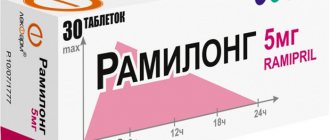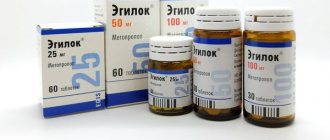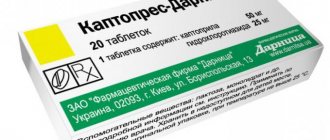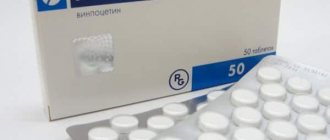Compound
Before using the drug, it is recommended to study in more detail the list of ingredients included in its composition.
"Enap" is made from the following substances:
- Enalapril maleate. This ingredient is added to many medications to help treat high blood pressure. Enalapril is also added to medications used to treat heart failure and left ventricular dysfunction.
- Corn starch. Quite often this substance is used for medicinal purposes in the treatment of skin diseases. However, when combined with other ingredients in Enapa, cornstarch helps normalize blood circulation and relieve symptoms of hypertension.
- Lactose. Milk sugar has many beneficial properties, due to which it is often added to medicines. It helps restore the body's defenses, improves metabolism, dilates blood vessels and copes with many heart diseases.
- Carbonic acid. This ingredient is used not only in medicine, but also in other industries. Carbonic acid salts help improve blood circulation and lower blood pressure.
Release form
In pharmacies you can find Enap in the form of tablets or injections for intramuscular administration. At the same time, the drug in tablet form is popular among patients.
Before purchasing Enap, it is recommended that you familiarize yourself with the main dosages of the drug:
- 2 mg - the most common type of tablet, which is characterized by a white color and a round shape;
- 5 mg - they are also white, but have a more elongated shape;
- 10 mg - tablets differ from others not only in volume, but also in orange color.
The drug, which is available in capsules, has only one dose, which is 1.25 ml.
Mechanism of action
One of the main advantages of Enap is the speed of its effect on the patient’s body. Almost immediately after administration, the drug begins to have a positive effect on the body.
Firstly, the drug activates the angiotensin system, thereby increasing the production of renin. It also helps lower aldosterone levels, which can cause symptoms of high blood pressure.
In addition, as a result of regular use of Enap, the production of an ingredient such as bradykinin is activated. This ingredient normalizes heart rate and helps lower blood pressure by dilating the walls of blood vessels.
Many doctors recommend Enap to patients suffering from primary hypertension. In this case, taking the pills will increase the flexibility of the blood vessels and speed up the pumping of blood through the heart.
Enap begins to act within an hour after taking the medicine in most patients. However, the maximum positive effect will be noticeable only after 5-6 hours.
Main properties of the drug
Enap blood pressure tablets are aimed at inhibiting the activity of the angiotensin-converting enzyme, thereby reducing the production of angiotensin 2, a substance that tends to increase blood pressure levels. The active substance is hydrolyzed to enalaprilat, thereby reducing the secretion of angiotensin 1 and angiotensin 2, which leads to a decrease in the level of aldosterone production.
Enap is an antihypertensive drug, the action of which is associated with an increase in the activity of the renin-angiotensin-aldosterone system, which plays an important role in the process of maintaining a stable level of blood pressure.
A decrease in blood pressure after taking the drug occurs regardless of the position of the person’s body in space, while the heart rate does not increase.
Orthostatic hypotension after initiation of drug treatment is observed in extremely rare cases
To achieve the necessary therapeutic effect from the medicine, it should be taken for several weeks. If the medication is abruptly discontinued, there is no increase in blood pressure. The therapeutic effect after taking the tablet is observed after 60 minutes; the maximum concentration of the active substance in the body is achieved after 4–6 hours. After consuming the tablet, up to 60% of the active components of the drug are absorbed in the intestines.
The duration of the therapeutic effect depends on the dosage of the drug taken. With the correct selection of the therapeutic dose, blood pressure readings will be stable throughout the day.
Characteristics of the properties of the drug for various diseases:
- Essential hypertension. A decrease in blood pressure provokes a decrease in peripheral vascular resistance, but this does not bring significant changes in heart rate.
- Diabetic nephropathy. After taking the drug, a decrease in protein concentration in the urine is observed.
- Chronic heart failure. Parallel use of diuretics and cardiac glycosides provokes a sharp decrease in blood pressure.
Enap reduces the risk of myocardial infarction and reduces the number of hospitalizations after angina pectoris
Regular use of tablets increases the body's sensitivity to physical activity and reduces the symptoms of heart failure. By taking pills for high blood pressure, the progression of pathological processes in the left ventricle slows down.
Indications for use
Before you start treating hypertension with these tablets, you should carefully read the indications for their use. Information about when it is best to take Enap can be found in the instructions for the drug.
Doctors recommend using the drug in the following cases:
- in the treatment of arterial hypertension;
- In the formation and development of complications of heart failure;
- in eliminating symptoms of left ventricular dysfunction;
- increasing the effectiveness of complex treatment of arterial hypertension using various drugs;
- to normalize the condition of patients suffering from angina.
Reception features
According to the instructions for use, the tablets are taken as a whole, regardless of the time of meal. The initial therapeutic dose for hypertension is 5 mg per day. When selecting a dose, the degree of hypertension and the functional state of the patient are taken into account. So, in case of severe symptoms, the dose is gradually increased to 40 mg per day.
In the first stages of treatment, the dosage of Enap should be strictly controlled by the attending physician.
In patients with heart failure at the stage of progression of the pathological process, as well as with renovascular hypertension, a strong decrease in blood pressure levels may occur at the beginning of the therapeutic course. For such patients, the initial dose of the drug is 5 mg per day.
Instructions for use
Every person planning treatment with Enap should know the specifics of using the drug. This will help you understand whether it lowers or raises your blood pressure and also determines the optimal dosage.
At what pressure should I take the medicine?
Initially, you need to decide at what blood pressure values it is better to use tablets. Experts recommend using the drug for older people who want to reduce high blood pressure. If you have low blood pressure, you should not drink Enap, it will only worsen your health.
To increase the effectiveness of the drug, you need to give up bad habits. Therefore, throughout the course of treatment you will need to stop smoking and drinking alcohol.
Dosage of the drug
To avoid overdose, it is necessary to determine the dose of the drug in advance. During the day, a person should drink no more than 25 grams of Enap.
Increasing this dose is possible only after consultation with your doctor.
Response time
The positive effect of taking Enap appears in each person at different times. However, in most cases, improvement in well-being is noticeable within 1-2 hours after taking the drug.
How long can I take it?
The duration of the treatment course is determined by the doctor who prescribed Enap for the treatment of hypertension. Most often, tablets are used for no more than a week to eliminate symptoms of high blood pressure. If the illness does not go away during this time, the course is extended for another five days.
Special instructions for the use of the drug Enap tablets
In patients with severe heart failure or severe renal impairment, as well as with water and electrolyte imbalance associated with treatment with diuretics, a salt-free diet, diarrhea, vomiting, hemodialysis, arterial hypotension may be observed, even several hours after taking the first dose. Hypotension is usually short-lived. Subsequently, the drug is usually well tolerated. Transient arterial hypotension is not a contraindication for taking the drug. In such cases, before starting enalapril, reduce the dose or, if possible, stop diuretics and a salt-free diet for several days. It is necessary to avoid prescribing the drug to patients with bilateral renal artery stenosis or stenosis of the artery of a single kidney. ACE inhibitors should be prescribed with caution to patients with coronary artery disease or cerebrovascular disease, severe aortic or mitral stenosis that affects hemodynamics, or with obstructed left ventricular outflow due to the risk of developing arterial hypotension and deterioration of blood supply to vital organs in such patients . Before starting and during treatment with the drug, it is necessary to monitor kidney function. During treatment, serum potassium levels may increase, especially in patients with chronic renal failure, patients with diabetes mellitus, and in patients taking potassium-sparing diuretics or potassium supplements. The simultaneous administration of Enap and these drugs is not recommended. Some types of membrane filters that are used in hemodialysis or other types of hemofiltration (apheresis) can cause hypersensitivity reactions. When carrying out desensitization to wasp and bee venom, hypersensitivity reactions may also occur. The effectiveness and safety of Enap in children have not been established. In some patients, at the beginning of treatment, taking Enap may cause arterial hypotension and dizziness, reducing the ability to drive vehicles or operate potentially dangerous mechanisms.
Overdose
It is undesirable to take Enap in large quantities, as this can lead to an overdose. Exceeding the permissible dose of the drug causes a sharp drop in blood pressure and deterioration in health. People who overdose experience breathing problems and a slow heartbeat. Kidney function is also impaired, leading to dehydration.
Many patients complain of increasing headaches, dizziness, nausea and a dry cough. If these symptoms appear, you must immediately lavage your stomach to clear the stomach of any remaining medication. Then the patient is advised to rest in bed and take activated charcoal to normalize the digestive system.
Side effects
Uncontrolled medication use can cause complications in various body systems:
- Heart and blood vessels (hypotension, pain in the chest, fainting, arrhythmia).
- Central nervous system (sleep disorders, headache, dizziness, increased fatigue, increasing weakness, depression).
- Sense organs (impaired functional ability of the vestibular apparatus, disorder of visual and auditory function).
- Bronchopulmonary system (bronchospasm, shortness of breath, sore throat, hoarseness).
- Digestive tract (dryness of the oral mucosa, nausea, vomiting, upset stool, abdominal pain, fecal obstruction, disruption of the pancreas, jaundice and skin).
- Excretory system (impaired renal function, proteinuria).
- Hematopoietic system (decreased hemoglobin levels and thrombocytopenia).
- Allergic reactions (rashes on the skin, swelling of the face, limbs, itching, urticaria, sweating).
Using the medication may cause a sharp drop in blood pressure, leading to severe dizziness.
Possible side effects after using the drug are mild in nature, so you should stop taking the drug only after consulting your doctor.
Side effects
Enap, like most other hypertension pills, has side effects that may bother patients after taking the drug.
Most often they occur in people who decide to ignore the rules for taking pills.
The most common complications after treatment with Enap include:
- skin redness;
- abdominal pain;
- heartbeat;
- dizziness;
- cough;
- general weakness and periodic loss of consciousness;
- digestive problems causing vomiting or diarrhea
- tingling in the right side of the chest;
- a sharp drop in blood pressure.
If side effects occur, stop taking Enap immediately and contact your doctor to prescribe another drug for high blood pressure.
Enap®
Arterial hypotension
Symptomatic hypotension rarely occurs in patients with uncomplicated hypertension. Arterial hypotension with all clinical manifestations can be observed after the first dose of Enap® in patients with hypovolemia, as a result of diuretic therapy, a salt-free diet, diarrhea, vomiting or hemodialysis. The development of symptomatic hypotension is more likely in patients with severe heart failure due to the use of high doses of diuretics, hyponatremia or impaired renal function. In such patients, treatment should be started and carried out under the supervision of a physician until the optimal dose adjustment of Enap® and/or diuretic. Similar tactics can be applied to patients with coronary artery disease or cerebrovascular diseases, in whom a sharp decrease in blood pressure can lead to the development of myocardial infarction or cerebrovascular accident.
If severe arterial hypotension develops, the patient should be placed in a supine position, legs raised and, if necessary, 0.9% sodium chloride solution administered intravenously.
Transient arterial hypotension is not a contraindication to further treatment with Enap® after stabilization of blood pressure and blood volume.
In some patients with heart failure and normal or low blood pressure, it may be further reduced when taking Enap®. This effect is predictable and is not usually a reason to discontinue therapy. If arterial hypotension is accompanied by clinical symptoms, the dose should be reduced and/or discontinued the diuretic and/or Enap®.
Aortic or mitral stenosis, HOCM
Like all vasodilators, ACE inhibitors should be used with caution in patients with valvular obstruction and left ventricular outflow tract hypertrophy. Should not be used in patients with cardiogenic shock and hemodynamically significant left ventricular obstruction.
Renal dysfunction
In patients with renal insufficiency (creatinine clearance <80 ml/min), the initial dose of Enap® should be selected, first of all, taking into account the creatinine clearance, and then taking into account the clinical response to treatment. In such patients, potassium levels and serum creatinine concentrations should be regularly monitored.
In patients with severe heart failure and kidney disease, including renal artery stenosis, renal failure may develop when treated with Enap®. The changes were usually reversible after discontinuation of the drug Enap®.
In some patients with hypertension who did not have renal disease before treatment, there was a slight and transient increase in the concentration of urea and creatinine in the blood serum when using the drug Enap® simultaneously with a diuretic. In such cases, it may be necessary to reduce the dose of Enap® and/or discontinue the diuretic. This situation indicates the possibility of hidden renal artery stenosis.
Renovascular hypertension
In patients with bilateral renal artery stenosis or arterial stenosis of a single functioning kidney, when treated with ACE inhibitors, the risk of developing arterial hypotension and renal failure is increased. Only minor changes in serum creatinine concentration may indicate a decrease in renal function. In such patients, treatment should be started with small doses under close medical supervision. The dose should be titrated carefully and renal function monitored.
Kidney transplant
There is no experience with the use of Enap® in patients who have recently undergone kidney transplantation. Therefore, treatment of such patients with Enap® is not recommended.
Double blockade of the RAAS
The simultaneous use of enalapril with aliskiren and drugs containing aliskiren in patients with diabetes mellitus and/or with moderate or severe renal impairment (GFR less than 60 ml/min/1.73 m2 body surface area) is contraindicated and is not recommended in other patients. Concomitant use of ACE inhibitors with ARB II is contraindicated in patients with diabetic nephropathy and is not recommended in other patients.
Liver dysfunction
In rare cases, therapy with ACE inhibitors was accompanied by the development of a syndrome starting with cholestatic jaundice and hepatitis up to the development of fulminant liver necrosis. The mechanism of development of this syndrome is unknown. If jaundice appears or a significant increase in the activity of liver enzymes in the blood serum, it is necessary to immediately stop treatment with an ACE inhibitor, closely monitor the patient and, if necessary, carry out the necessary treatment.
Neutropenia/agranulocytosis
Cases of neutropenia/agranulocytosis, thrombocytopenia and anemia have been described in patients using ACE inhibitors. In patients with normal renal function in the absence of other complications, neutropenia rarely develops. The drug Enap® should be used with great caution in patients with connective tissue diseases (including systemic lupus erythematosus, scleroderma) who are simultaneously receiving immunosuppressive therapy, allopurinol or procainamide, as well as a combination of these factors, especially with existing renal dysfunction. These patients may develop severe infections that do not respond to intensive antibiotic therapy. If patients still take Enap®, it is recommended to periodically monitor the number of leukocytes in the blood. The patient should be warned that if any signs of infection appear, they should immediately consult a doctor.
Hypersensitivity/angioedema
In patients receiving ACE inhibitors, including Enap®, there have been reports of the development of angioedema of the face, extremities, lips, vocal folds and/or larynx at any time after the start of treatment. If such symptoms develop, you should immediately discontinue Enap® and monitor the patient until they disappear completely. Even in cases where only the tongue is swollen and there is only difficulty swallowing without respiratory distress, patients may require long-term observation as the use of antihistamines and corticosteroids may not be sufficient.
Angioedema of the larynx or tongue can be fatal in very rare cases. Swelling of the tongue, vocal folds, or larynx can lead to airway obstruction, especially after a history of airway surgery. If there is swelling of the tongue, vocal folds or larynx, appropriate therapy is indicated, which may include: subcutaneous administration of a 0.1% solution of epinephrine (adrenaline) (0.3-0.5 ml) and/or measures aimed at restoring airway patency routes (intubation or tracheostomy).
Among black patients receiving ACE inhibitor therapy, the incidence of angioedema is higher than among patients of other races.
Patients with a history of angioedema not associated with ACE inhibitors are at increased risk of developing angioedema when taking any ACE inhibitor.
When ACE inhibitors are used simultaneously with drugs containing sacubitril (neprilysin inhibitor), the risk of developing angioedema increases, and therefore the simultaneous use of these drugs is contraindicated. ACE inhibitors should be prescribed no earlier than 36 hours after discontinuation of drugs containing sacubitril. Prescription of drugs containing sacubitril is contraindicated in patients receiving ACE inhibitors, as well as within 36 hours after discontinuation of ACE inhibitors.
Tissue plasminogen activators
Observational studies have found an increased incidence of angioedema in patients taking ACE inhibitors. after the use of alteplase for thrombolytic therapy of ischemic stroke.
Patients taking concomitant use of an ACE inhibitor and mTOR inhibitors (eg, sirolimus, everolimus, temsirolimus), racecadotril, DPP-4 inhibitors (gliptins), including vildagliptin, may be at increased risk of developing angioedema (eg, swelling of the airways or tongue with breathing problems or lack thereof). Caution should be exercised when prescribing racecadotril, mTOR inhibitors (eg, sirolimus, everolimus, temsirolimus) and DPP-4 inhibitors (gliptins), including vildagliptin, to patients already taking an ACE inhibitor.
Anaphylactoid reactions during desensitization with Hymenoptera venom
Patients taking ACE inhibitors during hymenoptera venom desensitization have rarely developed life-threatening anaphylactoid reactions. To prevent such reactions, it is necessary to temporarily stop taking the ACE inhibitor during desensitization procedures.
Anaphylactoid reactions during LDL apheresis
Life-threatening anaphylactoid reactions have occurred in rare cases in patients receiving ACE inhibitors during LDL apheresis with dextran sulfate. The development of these reactions can be avoided if the ACE inhibitor is temporarily discontinued before each LDL apheresis procedure.
Hemodialysis
Due to the increased risk of anaphylactoid reactions, the drug should not be used in patients undergoing hemodialysis using high-flow polyacrylonitrile membranes (AN69®) undergoing LDL apheresis using dextran sulfate. If hemodialysis is necessary, it is advisable to use dialysis membranes of a different type, or antihypertensive drugs of a different group.
Hypoglycemia
In patients with diabetes mellitus receiving oral hypoglycemic agents or insulin, blood glucose concentrations should be carefully monitored during the first month of treatment with an ACE inhibitor.
Cough
When using the drug Enap®, a dry, unproductive, prolonged cough may occur, which disappears after stopping the use of ACE inhibitors. what must be taken into account in the differential diagnosis of cough due to the use of an ACE inhibitor.
Surgery, general anesthesia
Before surgery (including dental procedures), you must warn the surgeon/anesthesiologist about the use of Enap®.
During major surgery or general anesthesia with the use of drugs that cause arterial hypotension, ACE inhibitors may block the formation of angiotensin II in response to compensatory release of renin. If a pronounced decrease in blood pressure develops, explained by a similar mechanism, it can be corrected by introducing plasma substitutes.
Hyperkalemia
ACE inhibitors may cause hyperkalemia because they inhibit the release of aldosterone. In patients with normal renal function, this effect is usually minor.
Risk factors for the development of hyperkalemia are: renal dysfunction, hypoaldosteronism, old age (over 70 years), diabetes mellitus, some concomitant conditions (decrease in blood volume, acute heart failure in the decompensation stage, metabolic acidosis), simultaneous use of potassium-sparing diuretics (spironolactone, eplerenone, triamterene, amiloride), potassium supplements or potassium-containing substitutes, the use of other drugs that increase plasma potassium levels (for example, heparin, trimethoprim or co-trimoxazole (sulfamethoxazole + trimethoprim) and especially aldosterone antagonists or angiotensin receptor blockers). The use of potassium supplements, potassium-sparing diuretics and table salt substitutes containing potassium can lead to a significant increase in serum potassium levels, especially in patients with impaired renal function.
Hyperkalemia can cause serious heart rhythm problems, sometimes fatal. In patients receiving ACE inhibitors. Potassium-sparing diuretics and angiotensin receptor blockers should be used with caution, and serum potassium levels should be monitored. The simultaneous use of the above drugs should be carried out with caution, under the control of potassium levels in the blood serum and monitoring of renal function.
Lithium
The simultaneous use of lithium salts and Enap® is not recommended.
Ethnic characteristics
The drug Enap®, like other ACE inhibitors, has a less pronounced antihypertensive effect in patients of the Negroid race compared to representatives of other races.
Special information on excipients
The drug Enap® contains lactose, so it is contraindicated in patients with lactase deficiency, lactose intolerance, and glucose-galactose malabsorption syndrome.
Contraindications
Before taking pills, each person should familiarize themselves with the contraindications to their use.
It is not recommended to engage in drug therapy with Enap for people who have the following health problems:
- internal bleeding;
- diabetes;
- narrowing of the renal artery;
- allergy to lactose and other ingredients included in the tablets;
- porphyria.
Special Recommendations
After the first use of the tablet, the patient may develop hypotension. In this case, the patient must undergo detoxification therapy using a 0.9% sodium chloride solution. Once the condition has stabilized, the therapeutic course can be resumed. It is not recommended to use the drug for people after a kidney transplant procedure.
Regular use of the drug may cause a non-productive dry cough, which stops after discontinuation of the drug
If the patient develops a jaundiced coloration of the skin, it is necessary to immediately interrupt treatment and consult a specialist.
Analogues and substitutes
People who cannot use Enap to treat high blood pressure are advised to drink Enap substitutes.
Among the highest quality analogues are:
- "Berlipril." This remedy is considered a fairly effective drug that can get rid of the symptoms of hypertension. Berlipril contains enalaprilat, which accelerates the production of bradykinin and dilates the walls of blood vessels. In the first days you should not take more than 5 mg of the drug per day. The dose is gradually increased to 30 mg over 10 days.
- "Renitek". Made from enalapril maleate, which improves blood circulation and the functioning of the cardiovascular system. Using Renitek for a week will help reduce blood pressure to normal. To eliminate the symptoms of hypertension, you should drink at least 10 mg of the drug daily.
- "Renipril." The drug is prescribed to restore breathing, improve blood circulation, dilate blood vessels, and reduce the load on the heart. “Renipril is taken daily at a dose of 15 mg per day.
Use of the drug Enap tablets
Doses are prescribed by the doctor individually for each patient depending on his condition. The tablets are taken orally whole, with a small amount of water, regardless of meals. The drug must be taken at the same time every day. Do not take two doses at the same time. Dosing for adults. Treatment of arterial hypertension: the initial dose ranges from 5 mg to 20 mg, depending on the degree of hypertension (arterial hypertension) and the patient’s condition. The drug should be taken 1 time per day. Dose adjustment depends on the achieved reduction in blood pressure. For mild forms of hypertension (arterial hypertension), the recommended initial dose is 5–10 mg per day. Patients with renovascular hypertension, salt wasting, cardiac decompensation or severe hypertension (arterial hypertension) may experience an excessive decrease in blood pressure at the beginning of treatment. For such patients, an initial dose of 5 mg or less is recommended and initiation of treatment should be under medical supervision. Previous treatment with a high dose of a diuretic drug may lead to loss of circulating blood volume and the risk of arterial hypotension at the beginning of enalapril therapy. For such patients, it is recommended to start treatment with 5 mg or less. The usual maintenance dose is 20 mg once daily. The maximum maintenance dose is 40 mg each day, given as a single dose or divided into two doses. If possible, therapy with a diuretic drug should be stopped 2-3 days before starting therapy with enalapril. The starting dose for patients who cannot stop taking diuretics before starting treatment with Enap is 2.5 mg of the drug as a single dose. During treatment, it is necessary to monitor renal function and potassium levels in the blood plasma. Treatment of heart failure and asymptomatic left ventricular dysfunction. The initial dose is 2.5 mg 1 time per day (dose adjustment is determined by tolerability of the drug). In the absence or after effective treatment of symptomatic hypotension, the dose should be gradually increased to the usual maintenance dose of 20 mg, taken once or divided into 2 doses. It is recommended to titrate the dose over a 2- or 4-week period. The maximum dose is 40 mg every day, divided into several doses.
A week | Dose in mg/day |
| Week 1 | Days 1–3: 2.5 mg/day as a single dose Days 4–7: 5 mg/day as a dose divided into 2 doses |
| Week 2 | 10 mg as a single dose or divided into 2 doses |
| Week 3 and 4 | 20 mg as a single dose or divided into 2 doses |
During treatment with Enap it is recommended to monitor renal function and potassium concentration in the blood plasma. Dosing in Renal Failure: Enalapril dosages for patients with chronic renal failure are based on creatinine clearance; it is necessary to lengthen the intervals between doses and/or reduce doses.
Creatinine clearance | Initial dose in mg/day |
| Creatinine clearance is 30ml/min – 80ml/min | 5 mg – 10 mg |
| Creatinine clearance is 10ml/min – 30ml/min | 2.5 mg |
| Creatinine clearance is 10 ml/min or less | 2.5 mg per day of dialysis* |
*Dosage on days when dialysis is not performed is adjusted by the doctor depending on blood pressure readings.
The therapeutic dose for elderly patients should correspond to the functional state of the kidneys. Dosing for children: the dose should be selected individually according to the disease of the particular patient, the intended period of treatment, tolerability of enalapril, the body's reaction and according to blood pressure indicators. For patients weighing 20–50 kg, it is recommended to begin treatment with a dose of 2.5 mg; The recommended starting dose for patients weighing 50 kg or more is 5 mg once daily. The maximum recommended dose is 20 mg/day and 40 mg/day, respectively.









